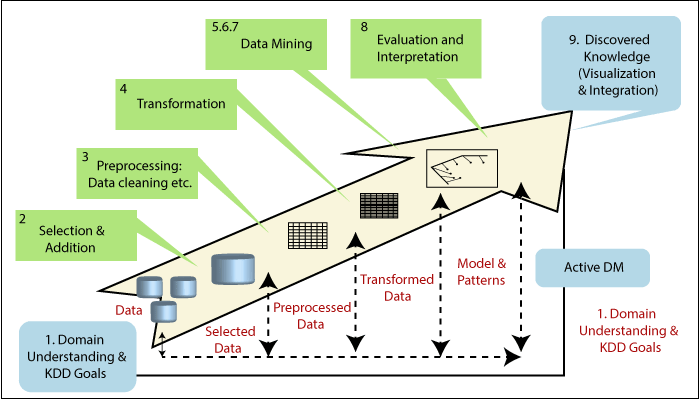The term KDD stands for Knowledge Discovery in Databases. It refers to the broad procedure of discovering knowledge in data and emphasizes the high-level applications of specific Data Mining techniques. It is a field of interest to researchers in various fields, including artificial intelligence, machine learning, pattern recognition, databases, statistics, knowledge acquisition for expert systems, and data visualization.

-
Understanding the Application Domain:
- Define goals and objectives of KDD.
- Understand end-user needs and the environment.
-
Choosing and Creating a Data Set:
- Determine relevant data for KDD.
- Integrate data from various sources for analysis.
-
Preprocessing and Cleansing:
- Improve data reliability.
- Handle missing values, noise, and outliers.
-
Data Transformation:
- Prepare data for Data Mining.
- Include dimension reduction and attribute transformation.
-
Prediction and Description:
- Decide on Data Mining techniques based on objectives.
- Choose between prediction (supervised) and description (unsupervised).
-
Selecting the Data Mining Algorithm:
- Choose a specific algorithm based on the selected technique.
- Consider factors like precision, understandability, and parameter settings.
-
Utilizing the Data Mining Algorithm:
- Implement the chosen algorithm.
- Iterate as needed by adjusting control parameters.
-
Evaluation:
- Assess and interpret mined patterns and rules.
- Consider the impact of preprocessing steps on results.
-
Using the Discovered Knowledge:
- Incorporate knowledge into systems for action.
- Measure the effectiveness of changes made based on the discovered knowledge.
- Address challenges in applying knowledge to dynamic real-world conditions.